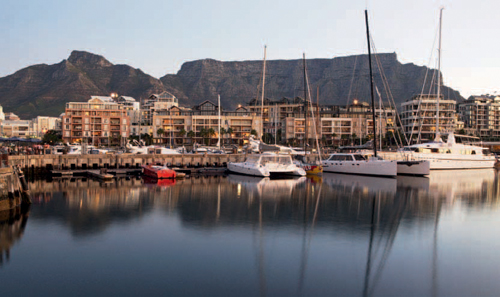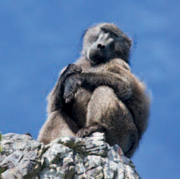SOUTH AFRICA
by road
A REGIONAL GUIDE
HOW TO USE THIS BOOK
South Africa by Road: A Regional Guide contains 29 chapters outlining the various regions of the country, supplemented by a comprehensive road guide that includes detailed regional maps and town plans of the countrys major centres.
The chapters each have sections on climate, fauna and flora, and history and heritage. A special focus on noteworthy places highlights what there is to see and do in the most interesting cities, towns and villages in each region. Several text boxes contain additional background information covering a range of topics from regional cuisine, agriculture and national parks to culture, scenic drives and must-visit museums and heritage sites. A separate series of boxes lists a selection of outdoor activities, routes and trails, including hiking, horse and 4x4 trails. Did You Know? boxes draw attention to curious facts, and Drivers and Hikers Alert boxes warn of any potential danger.
Each chapter also has a tailor-made regional map (or two) that includes national parks, nature reserves, game parks and places of interest such as grave and battle sites, heritage sites, rock art sites, hot springs and a host of others. For the driver (or his or her navigator), toll roads, passes, and national, secondary and gravel roads are shown, along with distance markers to help plan the journey.
For an overview of the regions and maps covered in each chapter, refer to the key plan opposite. Each chapter is represented here, with its relevant page number for easy reference.
The legend below the key plan illustrates the abbreviations and symbols used in the chapter maps, while a legend preceding the road guide may be referred to for the road-guide maps.
CHAPTER 1
THE CAPE OF GOOD HOPE
ABOVE: Table Mountain watches over yachts in the harbour at Cape Towns V&A Waterfront.
Much praise has been lavished on the beauty of Cape Town and its surrounds. In fact, the compliments have been flooding in ever since Sir Francis Drake rounded the subcontinent back in 1580 and proclaimed it the Fairest Cape. Todays tourists regularly vote Cape Town one of the worlds top destinations, classing it among a select number of places to see before you die.
Even the briefest of visits to this historic city, sheltered in the protective embrace of Table Mountain, will reveal that there is little exaggeration in all the acclaim. The coastal drives around the peninsula offer many scenic surprises turn a corner and find a raging sea straining against sharp cliffs, push on to the next bend and the frame becomes quietly pastoral. The vistas are matched by a history equally dramatic in which a clutch of cultures melded to form a unique community. Indigenous, Asian and European influences have added colour and variety to architecture, cuisine and entertainment.
Much of iconic Table Mountain is conserved by the Table Mountain National Park, which stretches across the peninsula. Besides the cable car ride up the mountain, a highlight is magnificent Cape Point at the southern tip and the rewarding views from its summit, reached by a short funicular ride. Mountains, ocean, beaches and forests offer a number of activities such as mountain biking, hiking, walking and birdwatching.
CLIMATE
The region has a Mediterranean climate. Summers are long and average 1527 C on the coast, with an occasional heat wave. Inland temperatures are slightly higher. March and April are particularly pleasant. Winters are mild, around 718 C at the coast and 522 C inland, but this is the rainy season and spates of wet days are not unusual. A gusty southeasterly characterises spring and summer. Dubbed the Cape Doctor, it clears the skies of pollution and may have you chasing umbrellas on the beach, but it is great for some wind sports.
FLORA AND FAUNA
Much of the Western Cape falls into the Cape Floristic Kingdom smallest of the six floral kingdoms of the world, but famous for its high diversity of plant species, most of them endemic. This floral wealth has earned the Cape Floristic Kingdom World Heritage Site status. Made up of eight protected areas covering 553 000 ha, this botanical heritage site includes an estimated 9 000 species of flowering plants and represents an astonishing 20% of all the floral species of Africa.
Fynbos (fine bush, endemic heathland) is one of the Capes most distinctive vegetation types and contains the three largest of more than 100 fynbos families: proteas, ericas and restios. These can be seen in abundance in the Table Mountain National Park and at Kirstenbosch National Botanical Garden.
Situated on Rhodes Drive in Newlands, the 528-ha Kirstenbosch National Botanical Garden is one of Cape Towns top attractions, renowned for its indigenous plants and themed gardens. On warm summer evenings, picnickers bring along snacks and drinks and enjoy the concerts that are held here.
Two creatures occurring along the peninsula coastline bump South Africas famed Big Five up to a Big Seven: the great white shark and the southern right whale. When the whales arrive between June and November, whale watching becomes an exciting pastime. Cape waters attract a number of shark species, and several shark-cage diving operators offer tourists a safe, close-up experience of these predators of the deep.
ABOVE: To mark his achievement of reaching the Cape, Bartolomeu Dias erected a stone cross, the Padro de So Filipe, in 1488, a replica of which can be seen at Cape
ABOVE: The Cape Peninsula has a large population of chacma baboons, many of them resident at Cape
ABOVE: Cape Point is situated in the southern section of the Table Mountain National Park and offers splendid views of the ocean and surrounding mountains.
HISTORY AND HERITAGE
Long before European settlers arrived, family groups of San hunter-gatherers occupied southern Africa, from the hot Kalahari Desert and the desiccated Karoo to the more temperate eastern and western coastal lowlands. About 2 000 years ago, a wave of new immigrants reached the Capes shores when Khoekhoe herders, bringing with them cattle, sheep and the craft of pottery, moved into the region. Today the two groups are collectively referred to as the Khoe-San.
In 1488 Bartolomeu Dias became the first European to round the Cape, thereby opening a route to the East and heralding a frenzied period of empire building by the nations of the Northern Hemisphere. For nearly two centuries thereafter the Cape became a refreshment and repair stop for passing ships. English sailors had expressed an interest in annexing it in the early 17th century, but King James I was not keen. Neither were the Dutch, until the Dutch East India Company received a report by surviving sailors from the company trader


















